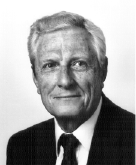KENDRIC C. SMITH'S HOME PAGE
![]()

40 YEARS IN ACADEMIA
- HOME PAGE
- CURRICULUM VITAE
- SCIENTIFIC
COMMUNITY SERVICE - BIBLIOGRAPHY
- RESEARCH HIGHLIGHTS
- SCIENTIFIC HISTORY
IN RETIREMENT:
A COMPUTER NERD and BIRDER
RESEARCH HIGHLIGHTS
1. Isolated the first high molecular weight RNA by first inhibiting cellular ribonuclease (in yeast) with a newly available detergent, sodium dodecyl sulfate.
[see The Road to Graduate School]
2. Was the first to physically separate transfer RNA molecules (by column chromatography) that were specific for specific amino acids. Unfortunately, I did not pursue this important discovery. [see Protein Synthesis]
3. Discovered UV-radiation-induced DNA-protein cross-links in E. coli, proved their biological importance, and determined the chemical structures of certain of the pyrimidine-amino acid adducts. [see Photochemistry and Radiation Chemistry of DNA]
4. Explained the complex molecular basis and genetic control of Liquid Holding Recovery, a recovery phenomenon discovered by Roberts and Aldus in 1949 that provided the first evidence that cells could repair radiation damage. Two other recovery phenomena were discovered that provided new insights into DNA repair after UV irradiation and after X irradiation. [see Recovery Phenomena]
5. Demonstrated the correct way to determine DNA synthesis kinetics when using isotope incorporation into DNA after treating cells with lethal agents, but made no friends in doing so, since I had to show how other peoples' methods were flawed. [see DNA Synthesis]
6. Demonstrated that thymine dimers can be formed by gamma-irradiation by direct excitation, and by the Cerenkov radiation produced by gamma radiation.
[see Photoreactivation]
7. Demonstrated that cells from patients who showed an unusual sensitivity to radiation therapy also showed an unusual radiation sensitivity in vitro. [see Mammalian Cells]
8. Demonstrated at least one mechanism for the synergism between UV and X radiation, i.e., a prior UV irradiation inhibits the ability of cells to repair X-ray-induced DNA double-strand breaks. [see UV/X-ray Synergism]
9. Demonstrated that, in contrast to far-UV radiation (254 nm), a large component of the lethal effects of near-UV radiation (360 nm) is due to membrane damage.
[see Near-UV Radiation]
10. Demonstrated that much of spontaneous mutagenesis in E. coli is due to the metabolic formation of "UV-like" lesions in DNA, and confirmed this to be true from phage to eukaryotic cells in an exhaustive review of the literature. [see Mutagenesis]
11. Discovered a third kinetic mechanism of UV radiation mutagenesis, and showed that the 1-hit mechanism is due to true back mutations, the 2-hit mechanism is due to suppressor mutations, and the new mechanism, whose "hit number" could not be determined because of the short range of doses (1-3 J/m2) over which it was expressed, is also associated with suppressor mutations, and appears to be an inducible process. [see Mutagenesis]
12. Showed that the umuC gene, which blocks all of UV radiation mutagenesis (literature), only blocks part of gamma-radiation mutagenesis; the oxygen-dependent part, and a small portion of the oxygen-independent part. The specific types of mutations under umuC control were determined. [see Mutagenesis]
13. Demonstrated that the gamma-radiation-induction of long-deletion mutations is due to the misrepair of DNA double-strand breaks by the recB-dependent pathway, but not by the recF-dependent pathway. [see Mutagenesis]
14. Independently discovered two pathways of nucleotide excision repair, the recA-dependent and the recA-independent pathways, and was the first to propose and test a specific model for the recA-dependent ("long-patch") pathway of nucleotide excision repair.
[see DNA Repair: UV Radiation]
15. Demonstrated that there are several pathways of postreplication repair under separate genetic control. There are the recF-dependent and recF-independent (which also has subpathways) pathways for the repair of DNA daughter-strand gaps. There is also a recB-dependent pathway for the repair of the DNA double-strand breaks that arise at the sites of unrepaired daughter-strand gaps. The repair of DNA daughter-strand gaps and of DNA double-strand breaks contribute about equally to survival. [see DNA Repair: UV Radiation]
16. Delineated the multiple pathways for the repair of X-ray-induced DNA single-strand breaks and of DNA double-strand breaks. [see DNA Repair: Ionizing Radiation]